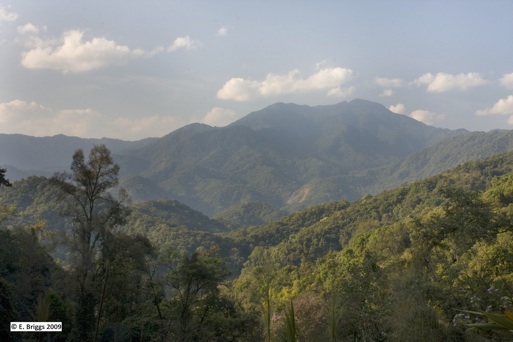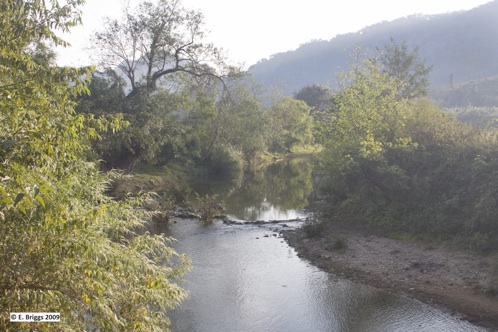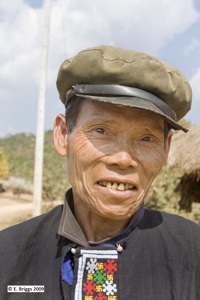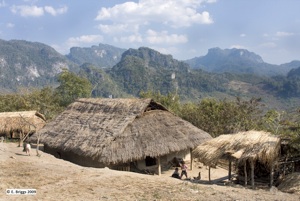About Nam Et - Phou Louey National Protected Area

Nam Et - Phou Louey (pronounced “naam et poo loo-ee”) National Protected Area (NPA) is located in the north east of Lao PDR and is one of twenty NPAs declared in decree 164/PMO, 1993. With an area of 4,229 km2 it is one of the largest in Lao PDR and covers 7 districts and three provinces (Houaphan, Luang Prabang and Xieng Khouang provinces). The NPA is mostly hilly or mountainous and is the source of many rivers. It is named after its two main features, the Nam Et River and Phou Louey Mountain (“Forever Mountain”). The area has primary forest remaining in many areas, a high level of biodiversity, and a number of endangered species including tiger, gaur, Sambar deer, and white-cheeked gibbon.
Goal
To conserve the NEPL ecosystem and its functions for the long-term as a model in Asia
Objectives
By 2015 increase NEPL’s ...... * tiger population by 50%
* gaur population by 50% * Sambar deer pop. by 60%
-
* gibbon population by 10% * otters population by 10%
Topography
Nam Et-Phou Louey NPA is located between latitudes of 19.85-20.05 degrees N and longitudes 103.20-103.85 degrees E. The terrain is mountainous with altitude ranging between 336 and 2257 metres above sea level. The highest point is the peak of Phou Louey and the lowest the Nam Et river valley. The topography of the area is steep and the land suitable for agriculture is limited.
Forest and Flora
Based on satellite image interpretation in 1997 only 0.1% of the NPA is undisturbed primary forest and 23.2% is partially disturbed/open forest, indicating long-standing encroachment. The main part of the NPA is covered by shrub land (63.9%), comprising bushes mixed with tall grasses. This vegetation type has resulted from repeated use by shifting cultivators and is difficult to rehabilitate to forest. There have been no detailed botanical surveys in the NPA excepting the Phou Louey Noy area, which indicated the presence of 314 plant species, 243 genera and 106 families. There are many plant species with known economic value: 18 are of use in construction, 26 for medicinal purposes, 39 as fuelwood, 46 for house decoration, 92 for consumption and 5 as poison. The uses, if any of the remaining 88 species are unknown.

Rivers
Nam Et Phou Louey is a mountainous area being the source of many major rivers including Nam Nern, Nam Khan, Nam Et, Nam Seuang, and Nam Seng. In addition there are many tributaries, which contribute significantly to the livelihoods of local people. The main importance of rivers to villagers relate to transportation, fishing, household water supply and irrigation amongst others.
Climate
Nam Et-Phou Louey NPA generally has a high upland climate with two seasons, dry and rainy. The rainy season runs between April and September and the dry season between October and March. The average annual rainfall in Nam Et-Phou Louey is 1350 mm. In general rainfall is unevenly distributed throughout the year with peak rainfall occurring between June and August, and July having the highest number of rainy days with 21. The annual open pan evaporation is 900 mm, effectively limiting cultivation to the rainy season.

Villagers living in the Nam Et-Phou Louey NPA comprise many ethnic groups including Tai Dam, Tai Daeng, Tai Kao, Tai Puan, Tai Lue, Tai Yuan, Khmu, Hmong Kao, Hmong Lai, and Yao. The population of the villages within and surrounding Nam Et-Phou Louey is 91,500 and there are 13,600 households and 283 villages. The ethnic split is Lao Loum 32%, Lao Teung 51%, and Lao Soung 17%. Within the NPA, where there are fewer villages located, there are 23,000 inhabitants.
Livelihoods and Tradition
The livelihoods of the villagers in the area are very much associated with the natural environment by way of agricultural production and shifting cultivation. There are few sources of alternative employment and settlement are highly scattered and often in remote and inaccessible areas. The traditions of the villagers in the area mainly stem from animist beliefs, with New Year celebrated in January and villagers following the lunar calendar. However, the 12 rules and 14 principles from Buddhism are commonly followed (heep sip song, khong sip sii). The religious beliefs of the different groups and their trappings, e.g. spirit forest, cemetaries and animal veneration, have an important bearing on conservation due to the restrictions they impose. Other beliefs may have negative impacts, e.g. burning of vegetation to improve land productivity and hunting prospects, prolonged celebrations and belief in the healing powers of spirits to the exclusion of modern medicine.

The economies of the majority of villages in Nam Et-Phou Louey NPA are primarily based on agriculture and the natural environment. A small number of villages also manufacture handicrafts and have simple services. The main staples are rice and corn. Upland cultivation (also known as shifting cultivation) accounts for more than 80% of cultivation, which is evident by many cleared hillsides along roads in the village use zone. The most common cash crops grown by villagers are soya beans, mak deuai, sesame and chili. The most common livestock are cattle, pigs, goats, and poultry. Non-timber forest products (NTFPs) such as cardamom, sugar palm, rattan, mulberry fibre, chewing bark, bamboo shoots and edible shoots and roots are another income source that is estimated at 22% of total of all income. The villages in the area are traditionally involved in revenue generating activities such as weaving, distilling, pottery and bamboo/rattan weaving. They also commonly manufacture brick and furniture for domestic use and, occasionally, sale. Trading and services are not yet well developed in the area although there are small shops providing goods for domestic consumption. According to the 2001 Poverty Assessment, the three main districts in Nam Et-Phou Louey, Houameuang, Viengkham, and Viengthong, fall into the second highest poverty bracket with poor villages making up more than 90% of the total (the poorest districts have 100% poor villages).


Nam Et - Phou Louey National Protected Area

Our partners & sponsors




© Copyright Nam Et - Phou Louey National Protected Area / Wildlife Conservation Society - Laos








